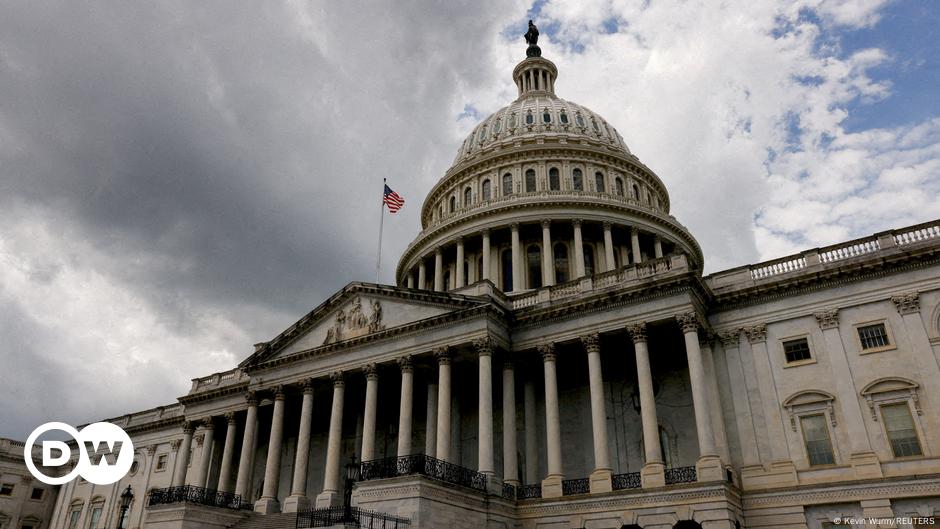Many people around the world will be watching closely to see who will move to the US White House next November, Democratic candidate Kamala Harris or Republican rival Donald Trump. But how much power Harris and Trump wield in office will be determined in part by the U.S. Congressional elections, also to be held on Nov. 5. Most seats will be up for election.
The United States Congress consists of two chambers. The House of Representatives is made up of members representing 435 different U.S. constituencies of roughly equal population size. They are re-elected every two years, including midterm elections after two years of the presidential term. Republicans have maintained a narrow majority in the House of Representatives since the 2022 midterm elections. Polling organizations are predicting a close race between Republicans and Democrats this year.
One-third of the seats in the Senate are up for election
The second chamber, the Senate, has only 100 seats (two for each state). This means that a U.S. state like Wyoming with a population of less than 600,000 people has as much influence in Congress as California, which has about 39 million people. Each of the 100 senators is elected to a six-year term. However, members of the House of Representatives are divided into three classes, and their six-year terms are graduated, with one-third of senators standing for election every two years. Class I senators will be up for election this year. They are the ones who were voted to the floor in 2018, midway through President Donald Trump’s term.
Overlapping election cycles were written into the constitution to maintain some stability, said Katja Gleason, director of the Transatlantic Program at the Aspen Institute in Germany. “The idea is simply that senators can pursue long-term legislative goals instead of focusing on campaigning,” Gleason told DW. However, “I’m a little skeptical that this is the case in reality. We have a permanent campaign in the United States.”
Democrats face a strategic disadvantage
The class is created so that only one senator is elected from each state. Republican-majority Nebraska is an exception this year, with senators who retire early taking their place.
Democrats are at a strategic disadvantage this year. They must defend 19 seats, ending the terms of four independent senators who typically vote Democratic. Of the 49 Republican senators currently in office, only 11 are up for re-election, and the remaining 38 are still in the middle of their terms. So Democrats have much more to lose.
Close race, easy win
As the U.S. political landscape becomes increasingly polarized, Gleason said it has become less common for voters to vote for different parties in presidential and congressional elections. “Still, the split in the vote could be decisive this year,” she said, citing Maryland, which is considered largely pro-Harris at the presidential level, as an example. However, Maryland’s current Democratic senator is not running for reelection, and moderate Republican Larry Hogan is vying for the seat against Democrat Angela Alsobrooks. “He (Larry Hogan) is very popular in Maryland and I definitely expect there will be voters who will vote for him as well as Harris.”
In Montana, polls show Democrat Jon Tester could lose his Senate seat to Republican Tim Sheehy. Pollsters predict a close race in Ohio between Democratic incumbent Sherrod Brown and Republican challenger Bernie Moreno.
But in other states, the situation is clearer. Prominent Democratic Rep. Adam Schiff, for example, is expected to be elected to the California Senate. He previously held a seat in the House of Representatives. And in tiny Wyoming, Republican Sen. John Barroso is likely to secure a fourth term.
What this means for the new president
The results of the US election are not yet completely clear. For example, if Trump were to win the presidency, he would have to deal with a Democratic-controlled House of Representatives, which could limit his policy-making powers.
Another possible scenario is that Harris wins the presidency, but Republicans hold a slim majority in the Senate. “It would be a setback for Harris if the Senate were Republican,” Gleason told DW. “That would make it very difficult for a president to fill important positions in his first few months, such as judges, cabinet members, ambassadors, etc., who would need Senate confirmation,” he added. “It is unusual for so many of these appointments to be rejected, but it remains to be seen whether the newly elected Senate will break with tradition.”
There is a close race between presidential candidates Donald Trump (left) and Kamala Harris (right), and whoever wins could face a hostile Congress. Image: Brian Snyder/REUTERS
Harris will also face challenges on policy decisions such as the environment, aid to Ukraine, the debt ceiling, lower food prices and housing investment. “In that case, she would need to seek a bipartisan compromise from the beginning,” Gleason said.
This article was originally published in German.



